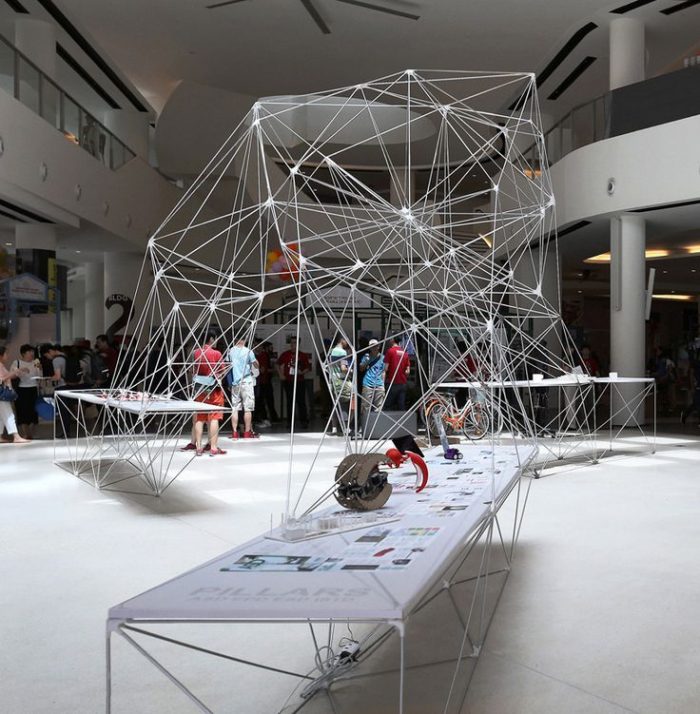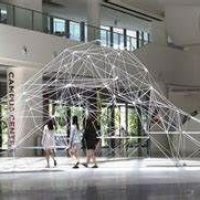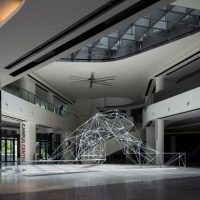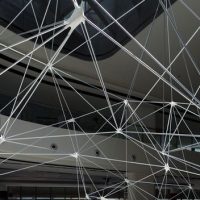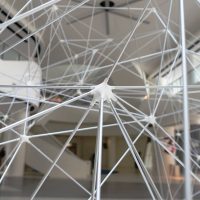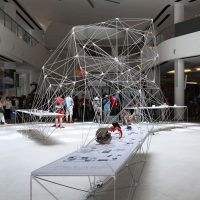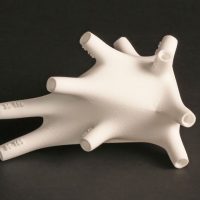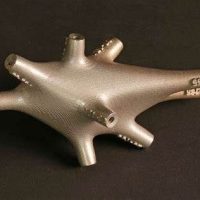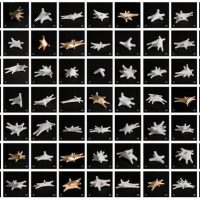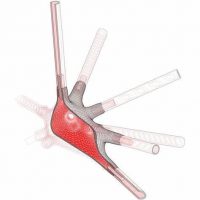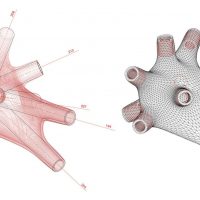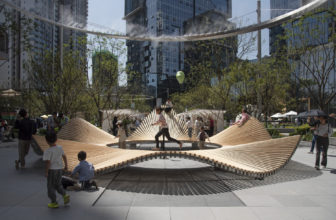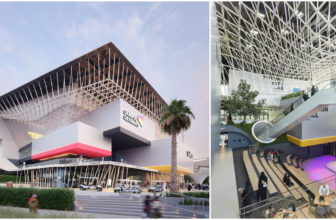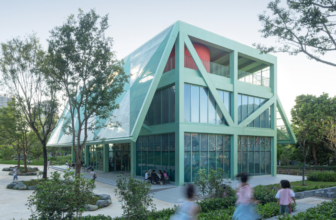In celebration of Singapore’s University of Technology and Design (SUTD) open house event 2016, two professors Felix Raspall and Carlos Bañón working together with a student team from SUTD Singapore, have explored the mechanical properties of 3D-printed parts made out of metal and nylon 3D printed nodes and aluminum bars to create a light-weighted mesh structure. The structure was placed in SUTD’s atrium and functioned as a sort of pavilion, where current students were able to display their work in an interactive environment. Placing the structure inside the atrium made for a new dynamic within the school space made it more interactive space. The pavilion’s final structure, as we can see, was constructed as a tetrahedral geometry to maximize the structure’s stability and robustness. The structure is a 14.5 meter large fibrous architectural mesh made up of 91 3D printed nodes (19 were printed out of metal, while the other 72 were made from nylon), which connect 369 10mm diameter aluminum bars in a geometric fashion. Felix Raspall, who is an architect and design researcher, explains the relationships between design, materiality, and technology ‘the early use of 3D printing in architectural research, education, and practice has been almost exclusively destined to produce physical representations – scaled models— of the designed building. but with the recent advances in additive manufacturing have exponentially increased the mechanical properties of 3D printed parts, opening new opportunities for this technology to be directly applied to functional architectural components at an increasingly larger scale.’ “Behind the apparent chaos, a strict tetrahedral geometry is embedded in the structure of the volume, as a strategy to confer stability and robustness to the whole system. In addition, the lightweight structure serves also as a support for three five-meter-long solid flat platforms which, hovering at different heights, exhibit a selection of students’ works,” said designers from SUTD. The 3D printed nodes, which connected the structure membranes, were designed using Grasshopper and c#. Moreover, each node was unique in design and was fabricated with specific dimensions.